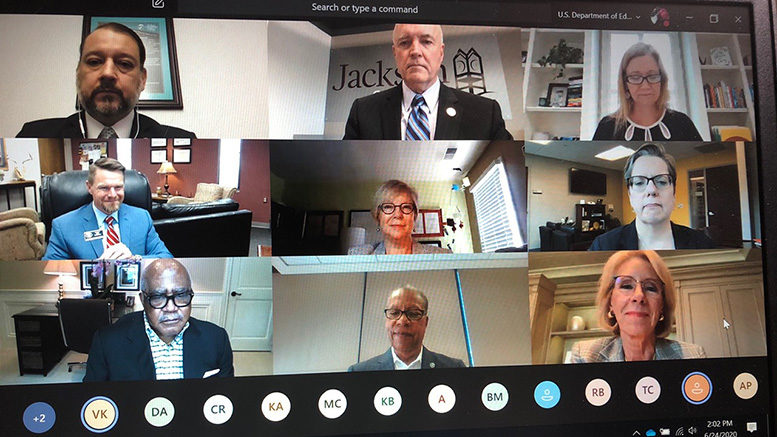- AACC board meets virtually with DeVos
- Bipartisan bill would create ‘personal reemployment accounts’
AACC board meets virtually with DeVos
American Association of Community Colleges (AACC) President and CEO Walter Bumphus and members of the AACC board of directors this week met virtually with U.S. Secretary of Education Betsy DeVos to discuss issues related to the COVID-19 pandemic and its impact on the nation’s community colleges.
Devos and Principal Deputy Under Secretary Diane Auer-Jones heard firsthand from community colleges presidents about the transition to remote learning, how colleges are addressing the needs of students, and the challenges of safely reopening campuses.
“We are appreciative for the opportunity to directly share plans for reopening and our efforts to serve both students and the business community with Secretary DeVos,” Bumphus said. “I am personally grateful for her sincere engagement with our leaders. Our colleges are critical to the recovery of the nation’s workforce and economy. Discussing concerns and successes with the Department of Education helps us to advance the sector and ultimately, to better serve the millions of students for which community colleges are the on-ramp to educational and career success.”
Bipartisan bill would create ‘personal reemployment accounts’
A bipartisan bill introduced in the House this week would create personal reemployment accounts (PRAs) to give displaced workers more flexibility in accessing training, including online and virtual programs, that can lead to available jobs.
Introduced by Reps. Elise Stefanik (R-New York) and Seth Moulton (D-Massachusetts), the Elevating America’s Workforce Act would authorize $8 billion for PRAs, which would be an individual account that unemployment insurance claimants, identified by the local area as in need of job training to regain employment, could access to receive limited funds for training. Participants could also receive a bonus for completing the training and reentering the workforce.
The idea for PRAs was initially floated during the George W. Bush administration, but it didn’t gain much support because it didn’t provide the same level of assistance to jobseekers, particularly those needing significant education and counseling as with traditional Workforce Innovation and Opportunity Act (WIOA) programming, according to education advocates.
The U.S. labor secretary would allot funding by formula to each state. It would be an amount proportionate to the relative number of unemployed individuals in the state compared to the total number of unemployed individuals in all states. Governors would retain 10 percent of funding, with the rest going to local economic and workforce development boards by formula.
Local workforce development boards would establish and administer PRAs through a one-stop delivery system. Training would have to lead to a recognized postsecondary credential and could include providers who are not on the eligible training provider list.

